The Optometry Money Podcast Ep 123: Savings Rate – The Ultimate Indicator of Future Financial Success
Questions? Thoughts? Send a Text to The Optometry Money Podcast!
In this episode, your host, Evon Mendrin, CFP®, CSLP®, owner of Optometry Wealth Advisors, dives into the critical importance of your Savings Rate as a foundation for financial independence. We explore how incremental improvements—or marginal gains—can lead to exceptional results.
What You’ll Learn in This Episode:
- The Story of Marginal Gains: How Sir Dave Brailsford’s focus on 1% improvements led the British cycling team to Olympic gold and what that means for your financial habits.
- The Role of Systems in Financial Success: Why success is more about consistent habits and systems than lofty goals.
- Understanding the Savings Rate: What it is, why it’s a leading indicator of future financial health, and how to calculate and improve it.
- Practical Strategies to Improve Your Savings Rate: From automating contributions to identifying areas for incremental improvement in your cash flow.
- The Danger of Chasing High-Risk Investments: Why a strong savings rate is more reliable than speculative ventures in achieving financial independence.
Resources Mentioned:
- 📖 Atomic Habits by James Clear: Learn how habits and systems drive success.
- 📰 Eyes On The Money Newsletter: Check out the recent edition discussing the impact of your Savings Rate.
- 📅 Schedule a Free Consultation with Evon: Let’s talk about optimizing your savings and cash flow.
- 🎧 The Optometry Money Podcast Ep 57: A Framework for Deciding Where to Save/Invest Next
- 📄 Free 2025 Financial Numbers Guide:
Click HERE to get your free copy of the guide to the most important financial and tax numbers for 2025.
Connect With Evon and the Podcast:
- Website: Optometry Wealth Advisors
- Email: podcast@optometrywealth.com
- Submit Questions: Use the link in the show notes to text a question directly to the podcast!
Thank You for Listening! Thank you for tuning in to this episode of The Optometry Money Podcast. If you enjoyed this episode, please subscribe, leave a review, and share it with your fellow ODs. Remember, small, consistent actions today lead to a financially secure tomorrow!
The Optometry Money Podcast is dedicated to helping optometrists make better decisions around their money, careers, and practices. The show is hosted by Evon Mendrin, CFP®, CSLP®, owner of Optometry Wealth Advisors, a financial planning firm just for optometrists nationwide.
Subscribe to our podcast below!
Episode Transcript
Podcast Ep. 123 Transcript: Savings Rate – The Best Indicator of Future Financial Success
[00:00:00] Hey, everybody. Welcome back to The Optometry Money Podcast, where we’re helping OD’s all over the country and make better and better decisions around their money, their careers, and their practices. I am your host, Evon Mendrin, Certified Financial Planner(TM) practitioner. And owner of Optometry Wealth Advisors, an independent financial planning firm, just for optometrists nationwide.
[00:00:26] And thank you so much for listening. Really appreciate your time and attention. And today we’re going to dive into a topic that’s foundational for long-term financial success. And that’s how do we increase your odds of hitting financial independence specifically, by focusing on habits and systems. And in particular, your savings rate.
[00:00:50] And first, I want to start with a story a story about Sir David Brailsford. The man who revolutionized British cycling.
[00:00:58]
[00:00:58] And when Sir David took over performance director in 2002 for the British cycling team. The team was pretty far from dominant. They had only one gold medal to their name in nearly 80 years. And they’re trying to turn the ship around, and this is a pretty big ship to turn around.
[00:01:15] And this is a huge undertaking. So what was Sir David’s approach to turn team Britain around?
[00:01:21] Well, his approach revolved around the theory of marginal gains.
[00:01:25] And he believed that if you broke down everything that goes into cycling performance, And improved each area by just 1%, the compounded effect would result in significant improvements over time. And he meant everything from redesigning bike seats to improving aerodynamics from painting floors white to spot dust, effecting bike maintenance. To ensuring riders slept on the same pillows every night to make sure they got optimal rest. I mean, he really broke down everything they can think of that goes into competing on a bike and then improved each element by 1%. And these small seemingly minor changes really added up. at the 2008 Beijing Olympics.
[00:02:13] So that is six years later. His team won seven out of 10 gold medals in track cycling. Four years later, they repeated again at London Olympics getting seven out of 10. And his approach showed the power of focusing on systems. On tiny, consistent improvements that drive results over time. And eventually they’re honed in on core group of factors to improve on. As he told a Harvard Business Review in an interview, he said, we realized that we had focused on the peas and not the steak. We tried so hard with all the bells and whistles of marginal gains. that our focus was too much on the periphery. And not on the core, you have to identify the critical success factors and ensure they are in place and then focus on your improvements around them. Now think about your financial goals, They may feel as far away as the top of an Olympic podium. for some of you, the point of financial independence is coming up over the next 10 years or so.
[00:03:19] And you might already start thinking about how to turn your assets, your practice value, your retirement accounts, your real estate properties. Whatever it may be. And all these different sources of income you might have into lifelong sustainable income. That window for you might be pretty close.
[00:03:38] For others it’s decades away. I mean, this is a financial independence too, too many of you may be this big. Unknown goal in the distant future with whole lot of uncertainty around what that looks like.but like, Sir David’s team success doesn’t have to come from one big grand action. It’s really about consistency. Consistently improving your financial systems and your habits over time. James Clear the author. who was pretty popular with his book, Atomic Habits. writes in Atomic Habits that “you do not rise to the level of your goals, You fall to the level of your systems”.
[00:04:17] You can have the grandest goals, the most ambitious goals. But if you don’t have the steps in place. The consistent actions that get you on track. You’re never going to hit those goals. In fact James Clear speculates that you don’t even need goals to be successful. As long as you have the right systems and habits.
[00:04:36] Which is pretty interesting to think about.
[00:04:37] I mean, so much around our business, our family,
[00:04:40] Our finances revolve around goals. What do we want to attain? What are we working towards I think that carrot, that motivation is important. What are we aspiring toward? But it’s not as important as having the steps the actions needed to get there. And thinking about financial planning, financial planning is really just aligning your dollars towards priorities. It’s making the best decision you need to make today.
[00:05:05] And then regularly watching. And making adjustments and improvements as you go. goals are great for giving you direction, but systems are what create momentum. today we’re going to dive into how you can create systems to make financial independence a natural outcome of your daily actions.
[00:05:24] The Importance of Savings Rate
[00:05:24]
[00:05:24] So to you, Sir David’s terminology here. If we’re planning for future financial independence. What is our steak? What are the most important factors for success? Well, to me, it’s how you use your cashflow. Specifically, and maybe most importantly, it’s your savings rate? This is the percentage of your income that you’re setting aside to positively impact your net worth. this includes your contributions to retirement accounts. Your 401ks, your simple IRAs profit sharing.
[00:05:58] If you’re owning the practice and doing profit sharing contributions. If you own a cash balance plan, it’s even greater opportunity. it’s your Roth or traditional IRAs. It also includes deposits into taxable brokerage accounts. So non-retirement accounts as well.but it’s also going to include your deposits to bank accounts.
[00:06:17] So if you’re adding to savings each month on a regular basis, If you’re building up liquidity towards a cold start or practice purchase, if you’re building up to buy that next rental property or that commercial property for your practice. Those dollars are a part of your savings rate. And I tend to include 529 account deposits as well. It’s not necessarily for your retirement. But it’s invested dollars towards a future expense. That would otherwise have to be paid out of assets or cashflow. And you do technically have control of the funds.
[00:06:52] So you could withdraw those funds if you actually needed to.
[00:06:55] So we want to track all dollars going towards something somewhere. that will positively impact your net worth. And a part of the start of every client relationship that I work with we’ll dive into cashflow both personally, and for the practice what’s coming in, what’s going out and if there’s any leftover, what should we be doing with it? What’s the next best step for your dollars. And we track different health vital signs, different health measures in terms of how well you’re using your cashflow.
[00:07:27] We track a debt rate, which is the percentage of dollars that’s going towards debt payments. Spending rate, which is your lifestyle expenses. What percentage of your income is going to that? Your tax rate and then that savings rate. which is maybe your best leading indicator. Your savings rate is probably one of the most powerful predictors of future financial independence. Or future financial health.
[00:07:50] Those actions that you take to regularly, habitually add dollars to your net worth over long periods of time. that is going to have the biggest impact on future growth of your net worth. And I believe that if you have a strong savings rate, If you aren’t taking on additional debt, so your debt rate’s not increasing. If you have a strong savings rate. Everything else in terms of your cashflow will fall where it needs to fall. And that’s why I like reverse budgeting so much reverse budgeting is really about. Prioritizing those dollars towards saving and investing. And once you’ve tackled your target savings rate, everything else can be spent however you want to spend it. You’ve got total freedom because you’ve already tackled the most important stuff.
[00:08:33]
[00:08:33]
[00:08:33] What is the right savings rate?
[00:08:33] And so where should that savings rate be? What does a healthy range? How much should you be saving? Well, there’s no right number for everyone. I do think a healthy savings rate is somewhere between 15 and 20%. If I’m talking with a client, our north star, our goal. Is trying to get that To 20%. And if you can get your savings rate to 20% average, I think you’re putting yourself on a really fantastic path forward. The higher your income, the higher, the savings rate is going to need to be. For those that are of relatively low income. you might not need to have as high of a savings rate, because social security is going to cover much more of your pre retirement income.
[00:09:15] But for you for the optometrist, especially as your income is increasing through your career. You’re going to need to increase that savings rate so that in retirement, and you can maintain that increasing level of spending that you’re going to get used to over your career. Increased spending increased lifestyle tends to come with increased levels of income.
[00:09:36] And you may not be able to get there immediately. Due to other cashflow needs or priorities, or just where you’re at in your career. Other lifestyle expenses. And you also may not be able to get there every year. Things come up in life, priorities change. You might have kids with the extra expenses and the other priorities that come with that. Or within the first few years of a cold start or a practice purchase. You might not have the cashflow to do it and that’s okay.
[00:10:02] Those dollars. You know, the dollars and the energy you’re putting into your practice. That’s essentially your savings rate. Your first investment has to be your practice. But that 20% rate or so can be that north star. Can be that guiding goal that you’re trying to get to, at least on average. And then based on your particular circumstances, you can adjust.
[00:10:24] For example, if you’re looking for a really early retirement, that’s going to require a much higher savings rate. And leaner spending to allow for it.On the other end. If you have a healthy pension in the household, for example, maybe your spouse works somewhere that allows for a pension, or maybe you’re working with Kaiser or the VA, then you can take a little pressure off the savings rate?
[00:10:45] So your personal circumstances can adjust the most appropriate savings rate for you.
[00:10:50] But this is one thing you can look at and track consistently to see. How healthy that vital sign is because your savings rate. the amount that you’re putting the side towards the future. Is going to be that best indicator of what the future net worth looks like.
[00:11:05] Debt rate helps. You’re paying debts off that does positively impact net worth, but your investing over time is going to have that much higher impact. And sometimes you get the question. Well, why do we include the match in there?
[00:11:17] Like your employer match.
[00:11:18] I don’t. And the reason why is because I want this savings rate, vital sign to be a measure of your habits, your actions, the things that are within your control directly. So for an employed optometrist, the associates out there, I typically won’t. For the practice owner I do, and the reason I do is because it is quite literally your own dollars through the practice that you are adding to your account as a match. And you could choose to not contribute to a 401k or a simple IRA. And instead take those dollars after tax and do something else with it. So for the practice owner I do for the associate, I typically don’t. but if you’re doing it on your own, you have to track that the way you feel is most appropriate.
[00:11:58] So that’s where I feel a healthy savings rate should look. That’s kind of the vital sign measure I’m looking at somewhere between, you know, 10 to 20%, preferably 15 to 20%. And the next question I usually get is where should it be going? Which accounts? Right? What assets should you be putting those dollars toward? And. I’ve offered before a set of steps, like an order of operations to contribute to.
[00:12:23] I’ve done a past episode about this, that I’ll link into the show notes, but. Really at the end of the day, it’s pretty personal to your situation. I might have two optometrists families. both trying to put aside the same savings rate, but the actual accounts or assets that are putting those dollars into maybe different between the two of them. You have to start with your priorities. And put dollars towards those priorities.
[00:12:45] First, get that emergency fund funded, buildup cash for upcoming expenses and goals. what are you planning to spend dollars on in the near future? I, I was just talking with clients about an upcoming house purchase and separately, an upcoming home remodel. And setting aside dollars for those things.
[00:13:04] We’re a pretty big chunk of these families savings rates, but they were the priorities, right? They were the top of the list. They were the things that needed to be tackled first. And then once we check those priorities off the list, We’re going to keep that same savings rate, but we’re just able to redirect those dollars to the next most appropriate place. Then there’s the investment accounts.
[00:13:24] you definitely want to at least get your company match. In the retirement account at work Though again, if you own the practice, it is your own money that you’re matching with. From there. It’s a pretty personal game plan. For some families filling up the 401ks are a perfectly fine option. that’s the approach that makes sense for you. For others, we’re prioritizing liquidity and flexibility a bit more.
[00:13:47] So maybe we’re leaning more heavily on a taxable investment account first before filling up dollars into a retirement account. We can talk all day about Roth versus pre-tax IRA versus HSA versus 401k and all of that. But the most important thing really is that you’re starting the habit of setting money aside. You’re setting the habit with a healthy savings rate. That’s really what we want to focus on. And then we can start to optimize from there.
[00:14:13] Importance of automating your investing
[00:14:13] A really big help here a big key is automation. Set up systems that take that makes saving effortless and consistent. The 401k contribution is so great because it’s automated. You don’t see it. You set the percentage, maybe the dollar amount. But you don’t have to think about it every paycheck, it just happens behind the scenes. And you don’t even have to go into the account and invest it.
[00:14:37] It’s really automated. As a behavioral tool it’s fantastic. And you can do the same with other deposits into your savings, into investment accounts. You can start to automate those on a monthly or quarterly, or maybe even annual basis. And the more you can take things out of your hands and off of your brain to have to think about and deal with the more likely you are to stay consistent with it.
[00:15:01] And.
[00:15:02] Having someone to keep you accountable helps that accountability partner, that coach, that advisor that can help you think through where to send these dollars, but also to make sure that you are staying on track. that accountability can be so helpful. And whether that’s coming from a peer of yours, whether that’s coming from your spouse, whether that’s coming from your partner in the practice, whether that’s coming from me, your advisor. sometimes we need someone to be dangling that carrot in front of us and making sure that we are staying accountable to the things we say are important to us.
[00:15:34] And then take a look at your spending to identify opportunities, to save more, of course we want to balance living for today with saving for tomorrow, there has to be a balance. your values, your priorities are going to change over your lifetime.
[00:15:47] And so you definitely want to see that balance play out as best as it can, but a strong savings rate. Isn’t just a goal. A strong savings rate is proof that your financial system is working.
[00:15:58] Dangers of chasing risk for higher returns
[00:15:58] And then lastly, I want to talk a little bit about the investing side of it, because while. smart investing matters. No investment strategy can fix a weak savings rate over a long period of time. You can’t out return a savings rate problem or a cashflow problem. It’s really easy to get sucked into shiny objects when we’re trying to catch up or get ahead. Chasing high risk investments like speculative or lottery ticket stocks or risky private illiquid real estate ventures, or sketchy crypto offerings.
[00:16:33] Which are a lot of times claiming to offer higher return for less risk. But I’ve seen too many times in too many stories, even with OD’s over the last couple of years, that chasing after returns often does more harm than good. Instead focus on building that strong system with a high savings rate. And that’s, what’s really going to set you up for success and even with lower than expected returns. We invest into an uncertain future and we have no control over what the day to day, month to month, year to year, or even decade to decade returns are going to be like, Or in what order the declines are, the positive years are going to come.
[00:17:11] And while we have history, We can project out expected returns into the future. We don’t know how investments returns are going to unfold over your lifetime. And nothing helps buffer against unexpectedly poor returns or bad timing, like a strong, healthy, consistent savings rate. and I put a little bit of math to this I’ll link to a recent newsletter I did. To try to see how much your savings rate can compensate for very low returns.
[00:17:39] And so wrapping up, remember, this markets are unpredictable. It’s something that’s on the list of things that are entirely out of our hands. But your habits and your systems. are completely within your control. Progress starts with small consistent actions, like automating your savings and focusing on savings rate. And your savings rate isn’t just a number. It’s the best leading indicator of your progress towards financial independence. If there’s one healthy vital sign to track, it’s going to be your savings rate. And if you want to learn more, check out our latest Eyes On The Money newsletter, which I’ll link to in the show notes.
[00:18:15] just did a newsletter about this topic specifically.if you want to learn more about how I help ODs get on track with their savings rate. And game plan, what to do next with extra cashflow, both in the practice and at home. head over to my website, www.optometrywealth.Com. Or check out the link in the show notes and you can schedule a no commitment, no pressure introductory call.
[00:18:38] And we can talk about what’s on your mind financially and how I help ODs navigate those same decisions, all over the country. And with that really appreciate your time and attention. If you’ve enjoyed these episodes would really appreciate you leaving a review. wherever you listen to podcasts, it’s always helpful for me to see that feedback and see how we can improve this show more and more.
[00:18:59] reach out if you have any questions and we will catch you on the next episode, in the meantime, take care.
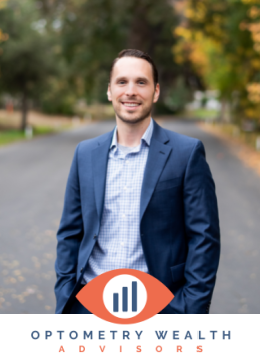
RECENT POSTS
- The Optometry Money Podcast Ep 134: The Case for Index Funds – Why Optometrists Should Embrace Passive Investing
- The Optometry Money Podcast Ep 133: Strategic Tax Planning Levers in the Optometrist’s Tax Return
- The Optometry Money Podcast Ep 132: Creating a Clear Pathway from Associate Optometrist to Partnership with Erich Mattei
- The Optometry Money Podcast Ep 131: Fresh Student Loan News and Tradeoffs ODs Choose When Using IDR Plans Toward Forgiveness
- The Optometry Money Podcast Ep 130: Are Stock Market Declines Normal? What History Tells Us and What ODs Should Do About It
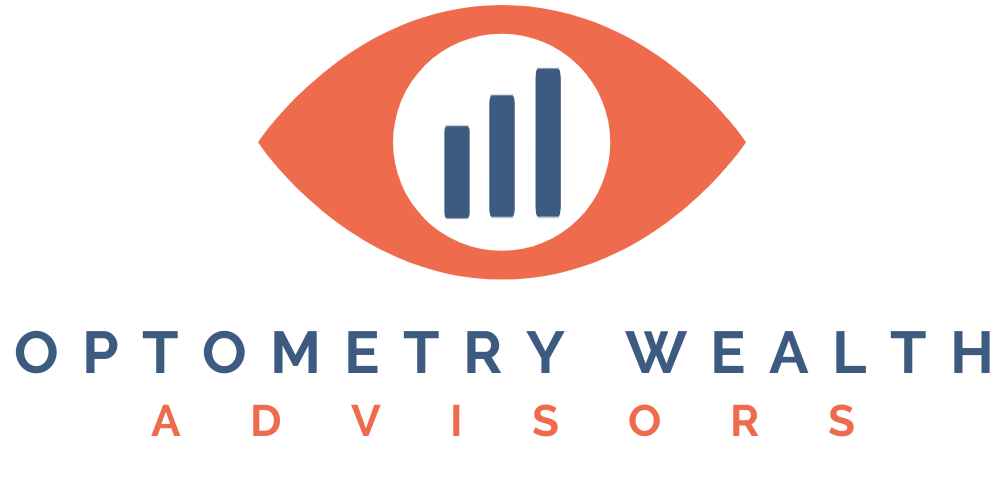
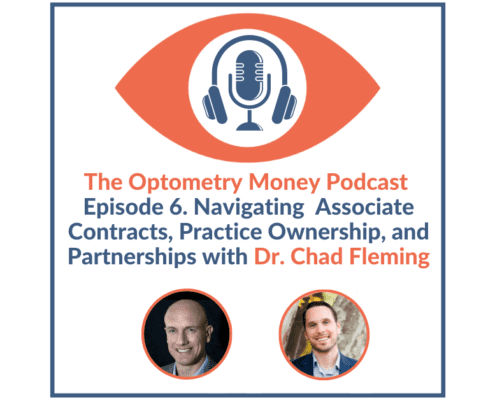 Optometry Wealth Advisors LLC
Optometry Wealth Advisors LLC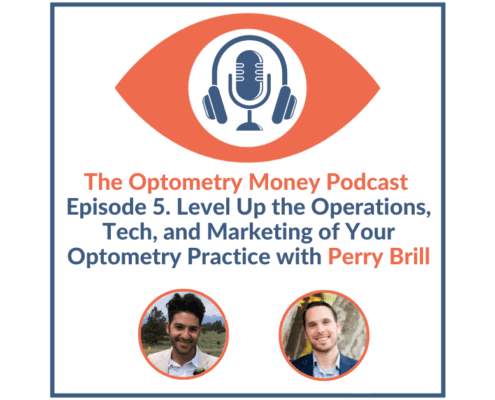 Optometry Wealth Advisors LLC
Optometry Wealth Advisors LLC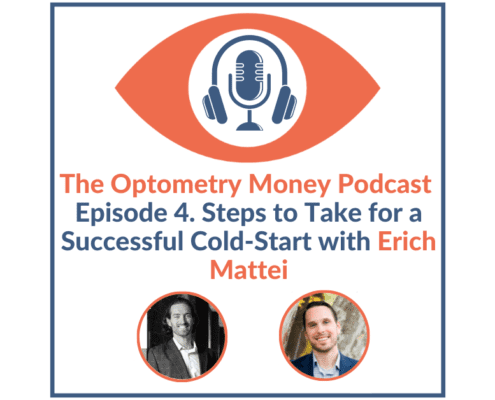 Optometry Wealth Advisors LLC
Optometry Wealth Advisors LLC
 Optometry Wealth Advisors LLC
Optometry Wealth Advisors LLC Optometry Wealth Advisors LLC
Optometry Wealth Advisors LLC